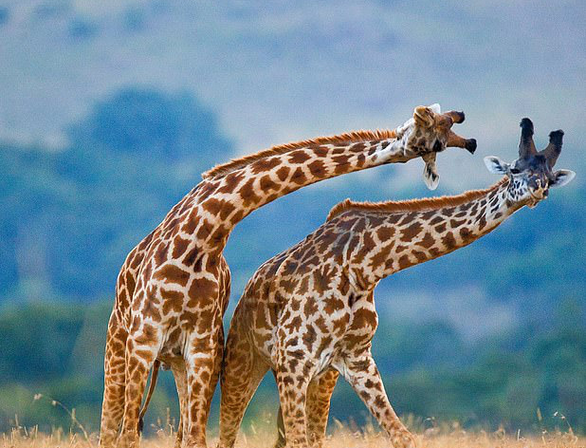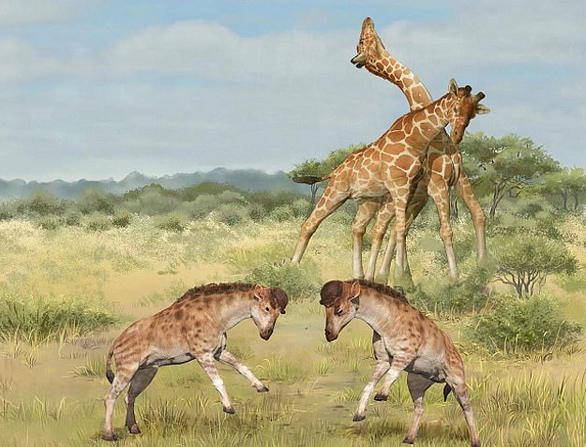Longer giraffe necks are for fighting, not foraging?

Today, a giraffe’s neck can be 2-2.5m long and weigh up to 300kg – Photo: Shutterstock
Giraffes are animals that live in Africa, very recognizable thanks to their outstanding long neck. Previous studies have suggested that the reason this animal developed a neck up to half its body length was due to the evolutionary process to adapt to the arid climate conditions on the African continent. Their favorite food is the young leaves on tall trees, so their necks are long to reach those tall trees.
But a new study by Chinese scientists claims the animal’s distinctive neck evolved over millions of years to become an effective weapon against other stags.
The team from the Institute of Vertebrate and Human Paleontology (IVPP) of the Chinese Academy of Sciences in Beijing came to this conclusion after analyzing the fossils of an “exotic” species of giraffe with name is Discokeryx xiezhilived in the Xinjiang region, northwest China 17 million years ago.
This deer originally had a short neck but evolved into a long neck deer. Their long necks and strong backbones give them more power when hitting other males in the fight for females.
Discokeryx xiezhi had only an ossicone – a bony structure at the top of the head – and was shaped like an arched saucer, not the cylinders or cones of modern giraffes.
In the journal publication Science On June 3, research expert Wang Shiqi at IVPP said: “Both present giraffes and Discokeryx xiezhi all belong to the family Giraffoidea. This means that although the shapes of their skulls and neck bones differ greatly, they are both involved in male mates’ battles.”

The graphic image simulates the battle of the “long giraffe Discokeryx xiezhi” and today’s giraffe – Photo: Wang Yu/Guo Xiaocong
Charles Darwin’s theory of evolution indicates that millions of years ago, giraffes had short, stiff necks. Evolution to a longer neck allowed deer to eat the leaves of the tallest trees in the African Savannah forest.
The theory that giraffes with their long necks help access the food they need to survive and pass on their genetic code to the next generations is still believed today by scientists.
However, from observing the giraffe’s behavior, experts in China began to realize that the neck acts as a weapon in battle. Two stags fight mainly by hitting each other with their heads and necks. Longer necks tend to generate more speed and power, so longer necks deal more damage to enemies.
According to experts, the neck size of male giraffes is directly related to their social hierarchy, and courtship competition was a driving force behind the evolution of long necks.
Analysis of the complex joints between the skull and cervical vertebrae of the species Discokeryx xiezhi also show that they are particularly well-adapted to high impact head-to-head.
When the team compared the horn morphology of several groups of ruminants, including giraffes, bovines, sheep, deer and antelope, the team also found that the horns varied in large giraffes. much more than other groups. This indicates that courtship struggles in giraffes are often more intense and varied than in other ruminants.
Besides, Discokeryx xiezhi are also thought to have lived in open grasslands and may have migrated seasonally.
at Blogtuan.info – Source: tuoitre.vn – Read the original article here



